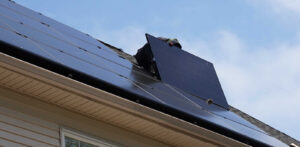A Fun, Interactive Guide to Understanding Energy Costs
Electricity rates in the U.S. continue to rise, affecting millions of households. But how much do you really know about what’s driving these costs? Why do some states pay nearly three times more than others? And what can homeowners do to protect themselves from increasing energy bills?
This guide will test your knowledge with seven quiz questions, provide insights into how electricity costs have changed over time, and offer practical solutions to lower your energy bills.
Electricity Rates in the U.S.: The Facts You Should Know
1. Electricity Prices Have Increased by Over 64% in 20 Years
The average residential electricity rate in the U.S. is now 16.19 cents per kilowatt-hour (kWh), according to the U.S. Energy Information Administration (EIA). Just 20 years ago, the national average was less than 10 cents per kWh.
This sharp increase has been driven by factors such as:
- Higher fuel costs, especially for natural gas, which many utilities rely on for power generation.
- Aging electrical grids that require expensive infrastructure upgrades.
- Increased demand due to the rise of home electronics, electric vehicles, and air conditioning usage.
(Source: EIA Monthly Electricity Report)
2. Some States Pay Nearly Three Times More Than Others
Electricity prices vary widely across the U.S. due to differences in energy sources, state regulations, and climate-related energy needs.
- The state with the highest residential electricity rate: Hawaii at 44.68 cents per kWh
- The state with the lowest residential electricity rate: North Dakota at 9.68 cents per kWh
States that rely more on imported fossil fuels tend to have higher prices, while states that generate a larger portion of their electricity from renewable sources like wind and solar tend to have more stable rates.
(Source: EIA State Energy Data)
3. Utility Rates Are Expected to Keep Rising
Many states have seen double-digit percentage increases in electricity rates over the past two years.
For example, in New Jersey, the state’s major utility companies have announced the following rate hikes:
- PSE&G: 17.24% increase
- Jersey Central Power & Light: 20.2% increase
- Rockland Electric: 18.18% increase
- Atlantic City Electric: 17.23% increase
Similar trends are being seen in Pennsylvania, Maryland, and Delaware, where utilities cite fuel price volatility, infrastructure upgrades, and supply chain issues as the main reasons for increasing costs.
(Source: NBC New York Report)
Test Your Knowledge: U.S. Electricity Rate Quiz
Now that you’ve learned about electricity costs, let’s put your knowledge to the test!
1. Which state had the highest residential electricity rate in 2023?
A) California
B) New York
C) Hawaii
D) Texas
2. What is the biggest driver of rising electricity prices?
A) More electric vehicles on the road
B) Rising fuel and infrastructure costs
C) Increased use of home electronics
D) More homes installing solar panels
3. What is the biggest electricity-using appliance in most homes?
A) Air conditioner and heating system
B) Refrigerator
C) Washing machine
D) Television
4. Which time of day is usually the most expensive for electricity use?
A) Early morning
B) Midday
C) Late afternoon and evening
D) Late night
5. What is the main benefit of net metering for homeowners with solar panels?
A) It allows homeowners to use more electricity than they produce
B) It provides credits for excess solar energy sent to the grid
C) It makes electricity free for solar panel owners
D) It eliminates the need for a battery storage system
6. How long do solar panels typically last?
A) 10-15 years
B) 15-20 years
C) 25-30 years or more
D) 40-50 years
7. What percentage of energy in the U.S. comes from renewable sources?
A) 10%
B) 20%
C) 40%
D) 60%
Answers:
- C) Hawaii – At nearly 45 cents per kWh, Hawaii has the highest electricity rates due to its reliance on imported fuels.
- B) Rising fuel and infrastructure costs – Natural gas price fluctuations and aging power grids drive up costs.
- A) Air conditioner and heating system – HVAC accounts for nearly 50% of a home’s energy use.
- C) Late afternoon and evening – Most utilities charge higher rates during peak demand hours, usually 4 PM – 9 PM.
- B) It provides credits for excess solar energy sent to the grid – Net metering helps homeowners lower their bills by earning credits for surplus power.
- C) 25-30 years or more – Most solar panels continue generating power for decades with minimal efficiency loss.
- B) 20% – Renewable energy sources, including solar, wind, and hydro, account for about 20% of U.S. electricity generation.
How Homeowners Can Reduce Their Electricity Bills
With electricity rates continuing to rise, homeowners can take action to reduce their energy costs and protect themselves from unpredictable utility price hikes.
1. Upgrade to Energy-Efficient Appliances
Replacing outdated appliances with ENERGY STAR®-certified models can lower electricity consumption by 10-50%, depending on the appliance.
2. Use Smart Electricity Strategies
- Run major appliances during off-peak hours to take advantage of lower rates.
- Install smart thermostats to reduce HVAC energy waste.
3. Improve Home Insulation
Better insulation and sealing air leaks can reduce heating and cooling costs by up to 20%, since HVAC systems use the most electricity in homes.
4. Go Solar to Lock in a Fixed Rate
One of the best ways to take control of rising energy costs is by switching to solar power.
- Solar panels generate electricity for decades, protecting homeowners from unpredictable rate increases.
- Through net metering, homeowners can earn credits on their electricity bill for sending excess solar energy back to the grid.
- Adding a Tesla Powerwall or Enphase battery allows homeowners to store extra solar power and use it when electricity rates are highest.
Solar energy provides long-term cost stability, reduces dependence on the grid, and offers homeowners greater energy independence.
Take Control of Your Energy Future
If you’re tired of unpredictable utility rates, now is the time to take action. Switching to solar allows homeowners to lock in a fixed electricity rate, reduce reliance on the grid, and save thousands on energy costs over time.
Call us: (267) 888-2554 | (609) 400-0059
Schedule a free solar consultation: sunwiseusa.com










